How to clean flower pots – in six simple steps
Spruce them up as well as prevent the spread of pests and plant diseases
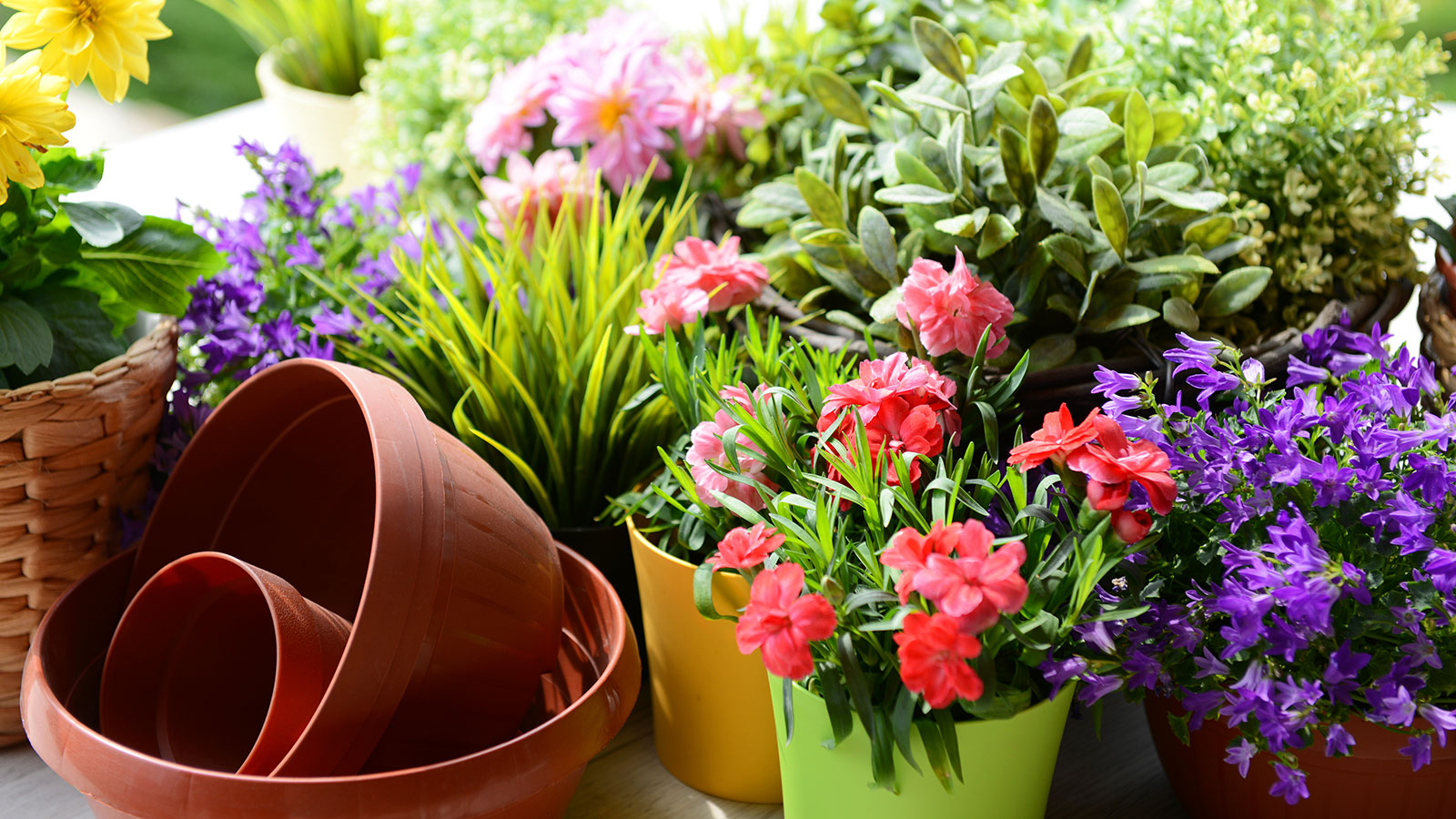

Cleaning flower pots is one of those simple tasks that should be on every gardener's to-do list as it's vitally important to ensure the health of your plants. And yet this admittedly uninspiring task often gets forgotten about, which can lead to the spread of plant diseases.
As well as helping against pests and diseases, cleaning flower pots can also be a useful tool in simply sprucing them up again. For that reason, you should add cleaning flower pots to your list of what to do with flower pots at the end of summer. Pots of all material can start to look faded and dirty after a season out in the elements and, for many, it could have been many years since their last good scrub.
As a keen gardener I know I have accumulated a collection of flower pots, modules, and seed trays over the years. And, as a former professional gardener, I have seen potting sheds overflowing with hundreds of plastic pots. Thankfully, the gardens I worked in had adopted good practices, cleaning and reusing plastic pots and trays (as well as more permanent pots) over and over again until they broke.
Reusing pots is always going to be better for the environment, but knowing how to clean flower pots properly before you use them again is key to ensuring you don't create problems for your container garden further down the line.
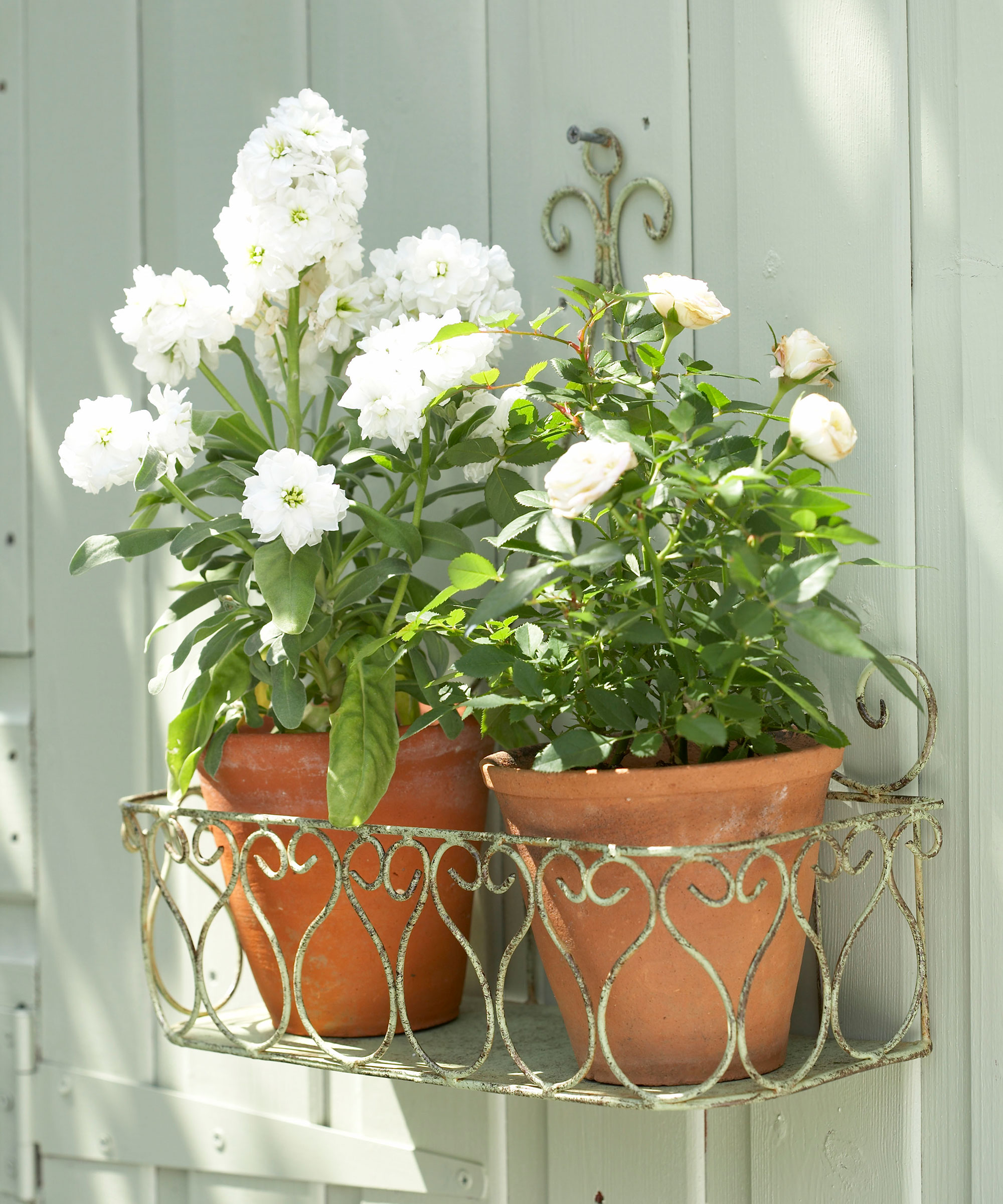
Some flower pots will make temporary displays while other potted plants are permanent fixtures

Drew is a former professional gardener who specialized in growing vegetables and fruit. He worked in a number of gardens for the National Trust in the UK for several years and then ran a productive walled garden growing vegetables, fruit, herbs, microgreens, and flowers for a high-caliber restaurant in England.
Why is cleaning flower pots important?
If you are planning on reusing flower pots or outdoor planters, there are some precautions you should take. There are bacteria, viruses, and fungi that can be present in any old soil left in pots. The pots need to be cleaned and sterilized thoroughly to ensure these do not end up affecting, and potentially killing, any future seedlings or plants that may call these pots home.
Diana from TheGardeningTalk warns that pots can 'become a breeding ground for pests and diseases' and claims it is vital to 'regularly clean and sanitize' them to keep plants healthy and prevent any spread of pests and diseases.
'Cleaning flower pots is an essential part of plant care and maintenance. Not only does it keep your pots looking neat, but it also helps prevent the spreading of diseases and pests. Plants grown in pots are more susceptible to these issues because they are contained in a small space and do not have access to the same amount of natural resources as plants grown in the ground,' she adds.
'By regularly cleaning your flower pots, you can help to prevent the build-up of bacteria and fungi, which can cause diseases in your plants. You can also remove any lingering pests, such as aphids or spider mites, which can quickly multiply and infest your plants.'
Fungus gnats and some species of mealybug can also overwinter in any soil left in pots, while the RHS warns that pots can be 'breeding grounds for pests and diseases – especially baby slugs'.
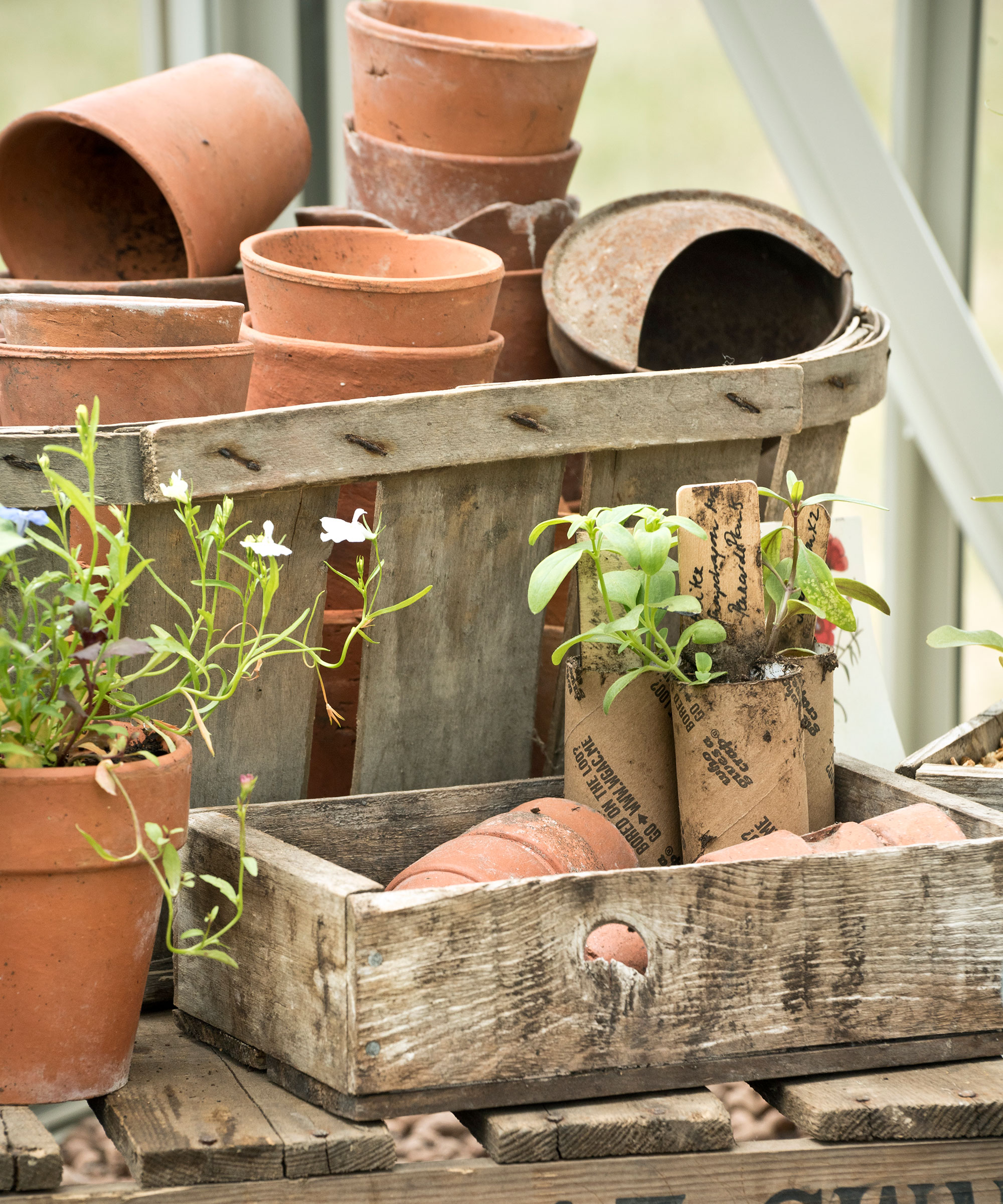
Flower pots can be re-used for propagation tasks
How to clean flower pots to remove dirt and pests
- Empty the flower pots completely, ensuring you remove all of the soil.
- Brush the inside of the flower pot with a stiff brush to remove any debris clinging to the pot. Something like this heavy duty outdoor brush from Amazon would be ideal for this task.
- Mix together a weak bleach and water solution – one part bleach to ten parts water – and submerge your pots in the solution.
- Leave your pots soaking in this solution for half an hour, before pouring it away. Rinse the pots well using a hose or outdoor faucet.
- Let the pots dry naturally outside in the sun rather than using a towel or wipes to remove any moisture.
- Ensure your cleaned and sterilized pots are kept away from any dirty ones as you do not want to contaminate your freshly cleaned containers.
If you do not wish to use a bleach solution, then there is a more environmentally friendly option of a mix of vinegar and water – a solution of one part each. Again, soak the flower pots for up to 30 minutes in the solution before rinsing them and letting them air dry before using or storing.
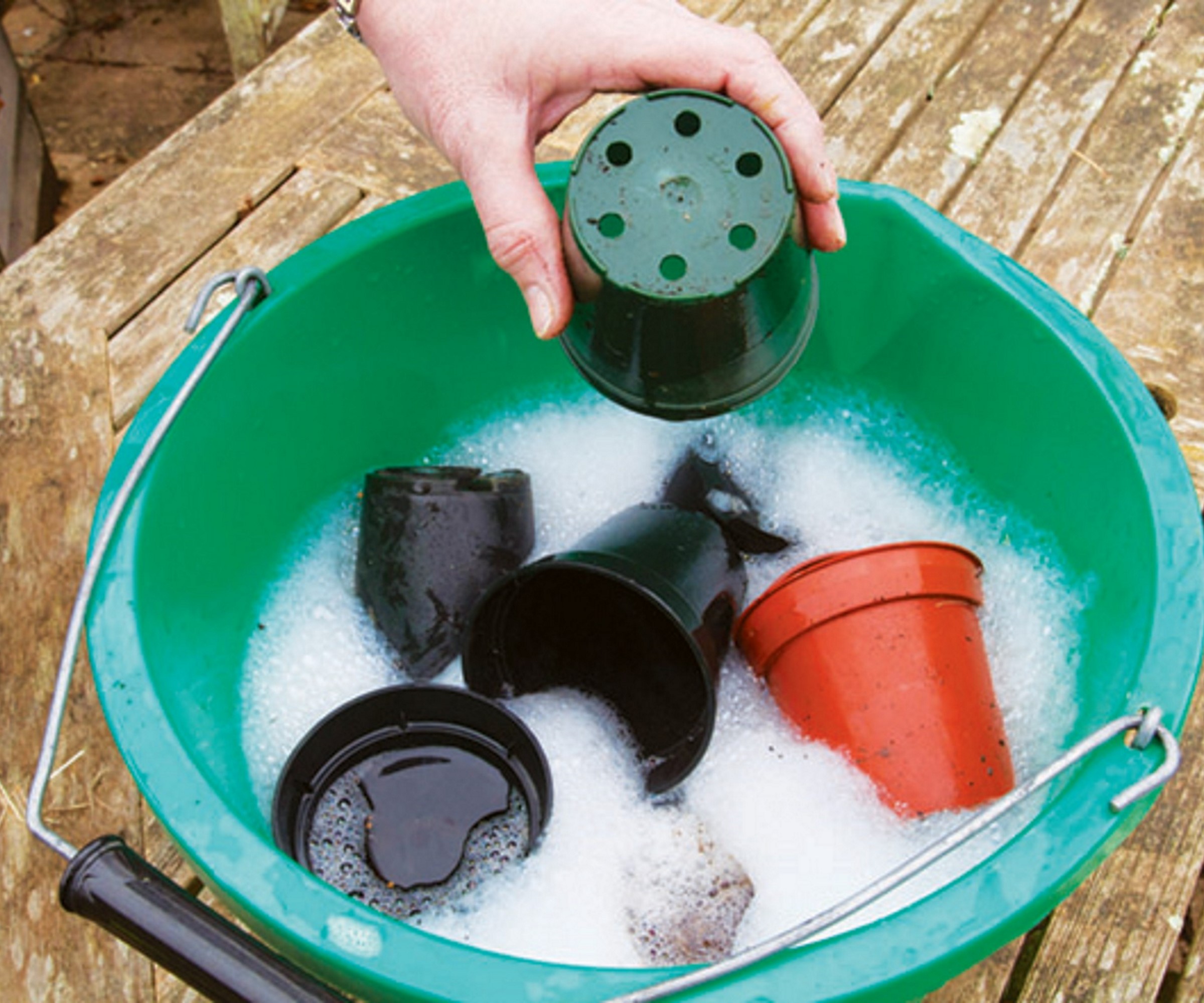
Give flower pots a soak for 30 minutes and allow to air dry
Removing white mineral deposits on clay or terracotta pots
You may notice a build-up of white ‘crust’ when you inspect your terracotta or clay garden pots. These deposits are a residual build-up of minerals and salts that come from fertilizers and tap water.
The build-up can happen on both the inside and outside of pots and Vladan Nikolic, founder of MrHouseplant warns that this crust is 'not merely an aesthetic issue' and can actually harm a plant’s health.
He adds: 'Over time, the accumulated minerals and salts can burn roots. These deposits can also affect the pH of the soil and block the absorption of essential nutrients.'
This build-up needs to be cleaned off thoroughly to ensure the health of plants going into the flower pot. If you want to help slow down the build up of this crust, one simple method is to start watering plants with rainwater instead of tap water.
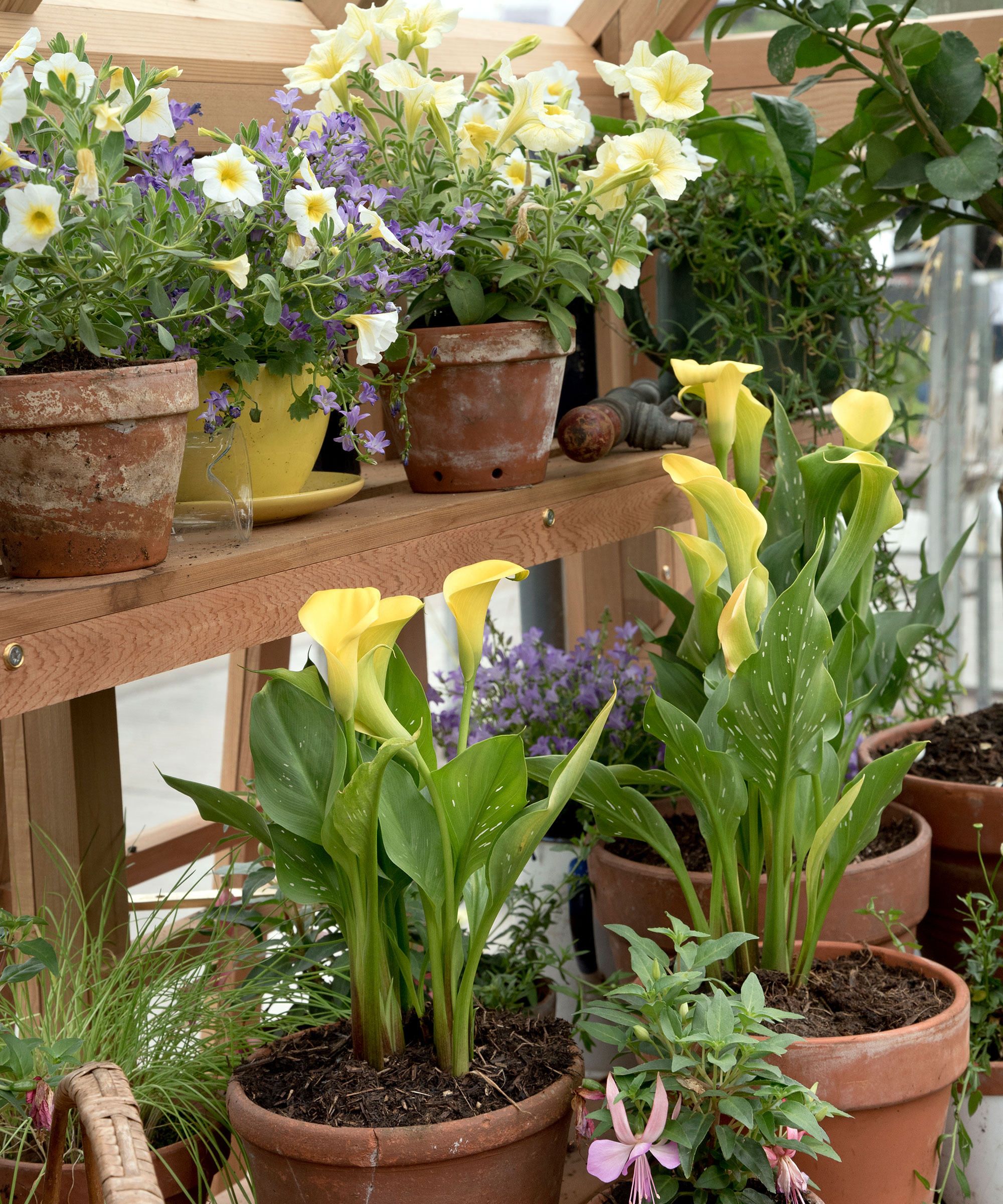
Terracotta pots can last for many years when properly maintained
The environmental benefits of cleaning and recycling your flower pots
The gardening sector as a whole uses a lot of plastic and unfortunately that makes it a contributor to the global problem of plastic pollution. An astronomical number of plastic plant pots and trays go to landfill every year. Plastic pots are estimated to take up to 500 years to decompose.
Nowadays many people’s mindset has moved away from this throw-away culture, but the amount of pots thrown in the garbage is still too high. While there are many alternatives to plastic pots available nowadays, such as coir flower pots (available on Amazon), the best way to deal with those already taking up space in your garage or shed storage is to keep using them for years to come, rather than replacing them.
Mohammed Bhula from The Botanical Archive, says: 'Reusing flower pots is an incredibly important way to help protect our environment. Tons of pots go into landfills every year and plastic pots in particular take decades to break down. In order to do our bit we recommend cleaning and reusing plant pots wherever you can.'
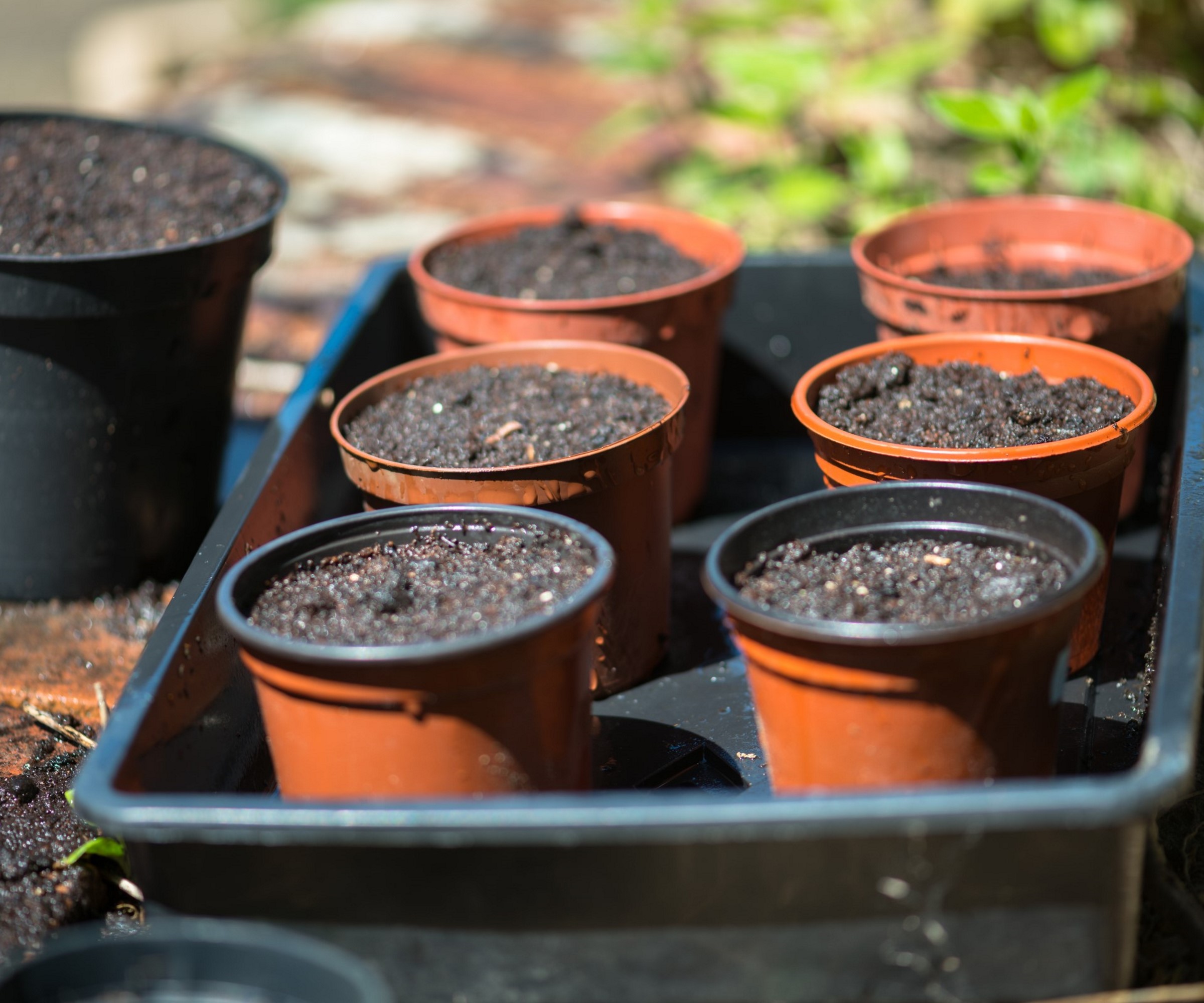
The right care can mean pots can be used year-after-year for sowing seeds and growing seedlings
Sign up to the Homes & Gardens newsletter
Design expertise in your inbox – from inspiring decorating ideas and beautiful celebrity homes to practical gardening advice and shopping round-ups.

Drew’s passion for gardening started with growing vegetables and salad in raised beds in a small urban terrace garden. He has worked as a professional gardener in historic gardens and specialises in growing vegetables, fruit, herbs, and cut flowers as a kitchen gardener. That passion for growing extends to being an allotmenteer, garden blogger, and producing how-to gardening guides for websites. Drew was shortlisted for the New Talent of the Year award at the 2023 Garden Media Guild Awards.
-
 Thoughtful modernism – how one Dallas home makes bold contemporary design feel warm, welcoming, and comfortable
Thoughtful modernism – how one Dallas home makes bold contemporary design feel warm, welcoming, and comfortableWith its mix of textural finishes and carefully curated furnishings, this modernist home is a refreshing retreat
By Karen Darlow Published
-
 'Wick away the ick' – 6 things people with clean laundry rooms always do to make this hardworking space shine
'Wick away the ick' – 6 things people with clean laundry rooms always do to make this hardworking space shineThese tips on how to clean your laundry room will banish grime
By Seraphina Di Mizzurati Published